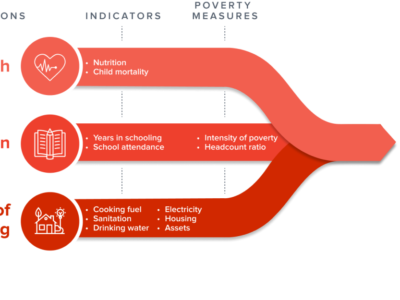Productivity – the efficiency with which societies combine their people, resources, and tools — is the central driver of the development process. The appreciation of the central role of productivity enjoys a long and distinguished pedigree.
Paul Krugman’s often repeated quip that “productivity isn’t everything, but, in the long run, it is almost everything” echoes the earlier reflections of medieval Arab social theorist Ibn Khaldun (1332–1406), who argued even more portentously in his Muqaddimah (1377) that “civilization and its well-being, as well as business prosperity, depend on productivity.”
Sustained increases in productivity are critical not only to the average denizen of civilization but to those who share least in its benefits. Long-term incremental improvements in earnings in industry or agriculture — the source of employment and livelihoods for many of the poor — can be achieved only by increasing worker or farmer productivity. Workers will leave informal self-employment only if earnings in the formal sector merit it. Hence, the route to generating good jobs transits directly and inexorably through the product ivity reform agenda. In addition, produ ctivity-driven cost reductions reduce the prices of key products consumed by the poor and thereby increase household purchasing power, helping poorer households get more for less. New technologies reduce the cost and improve the efficacy of service delivery in all social spheres. Raising global produc tivity is thus arguably the pivotal element of an integrated strategy to generate jobs—and good jobs—and reduce poverty.
The Twin Productivity Puzzles
The central role of productivity has gained renewed salience in current policy debates for two reasons. First, the global productivity engine appears to have stalled. The recent productivity slowdown in advanced economies and, to a lesser extent, follower countries threatens to reduce the rate at which all countries are pulled ahead and global poverty is alleviated. This slowdown is occurring despite spectacular advances in computing power and a host of derivative technologies: the promise of rapid advance in science and technology seems out of sync with observed slower growth in productivity.
Second, the hoped-for natural convergence of follower countries in the developed world to the global frontier has not materialized, and many countries remain seemingly trapped at low- or middle-income levels. Both pieces of this puzzle must be resolved to raise global produ ctivity growth rates.
As this chapter documents, there is no consensus on why the engine of productivity growth has not regained its previous power, or why followers are so slow in catching up to the leaders. However, over the past few decades, the analytical frameworks through which these phenomena are viewed and their roots are analyzed have experienced major shifts, both conceptually and empirically, dramatically increasing our understanding of the functioning of the underlying mechanisms and dynamics. This volume pulls together the underlying shifts in paradigm and measurement and terms them the “second wave” of productivity analysis. This new wave has been facilitated by three critical evolutions. First, the access to detailed and high-quality firm-level data has increased across the world. Second, partly aided by this availability, an academic literature has emerged that is critically revisiting many established approaches, in particular, the estimation of firm production functions, and from there, the identification and measurement of the drivers of product ivity growth. Third, the quantification of human capital or “capabilities” relevant to productivity improvements, in terms of both managerial skills, and more fundamentally, psychological characteristics, has permitted a tentative opening of the black box of entrepreneurship, the central driver of product ivity over the long run.
Each of these developments has important implications for how to think about the challenge of raising productivity and for the corresponding policies that are advanced. The relaxing of the assumptions of perfect competition and identical firms allows researchers to reintroduce questions of market structure into productivity analysis and reopen long-standing questions about the impacts of trade liberalization and competition on innovation and product ivity growth. The focus on product quality and the evolution of product demand moves thinking about product ivity beyond the unique focus on efficiency as a determinant of firm performance. An appreciation for the role of risk in all dimensions augments the customary discussion of distortions in the business climate. The realization of the broad spectrum of capabilities required to start and run modern firms dictates a reconsideration of the importance of human capital relative to the environment in which it operates.
These and other themes will be recurring leitmotifs across this volume, which synthesizes and extends this literature and provides new evidence to ground it in the developing- country reality. In particular, to illustrate the power of these approaches, the volume employs firm-level data sets from several representative follower countries that collect the variables needed to permit second-wave analysis.
For more, download and read through the Productivity Revisited Shifting Paradigms in Analysis and Policy
Source: Cusolito, Ana Paula, and William F. Maloney. 2018. Productivity Revisited: Shifting Paradigms in Analysis and Policy. Washington, DC: World Bank. doi:10.1596/978-1-4648- 1334-4. License: Creative Commons Attribution CC BY 3.0 IGO.






